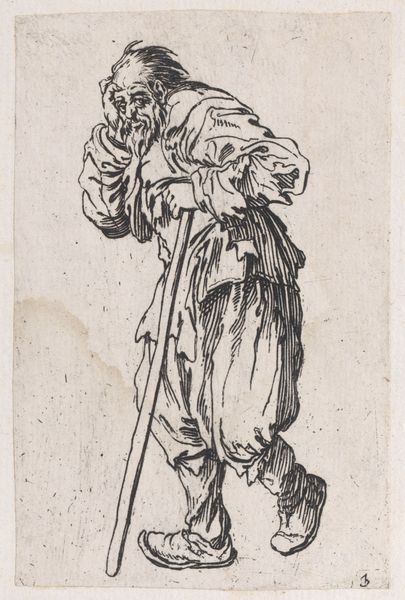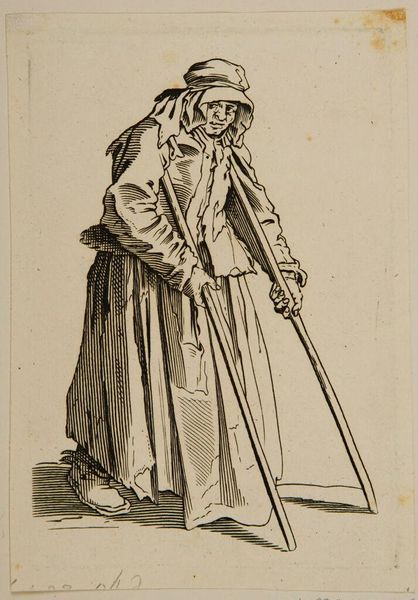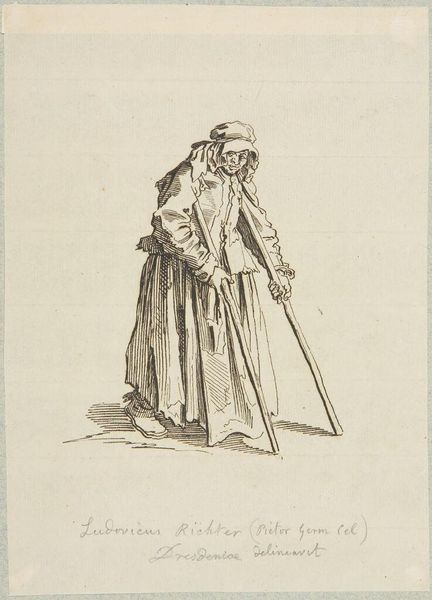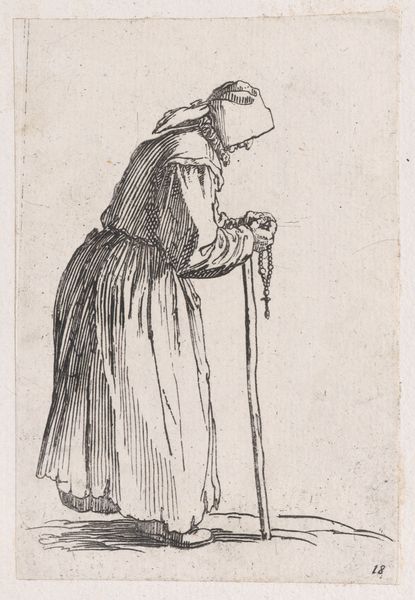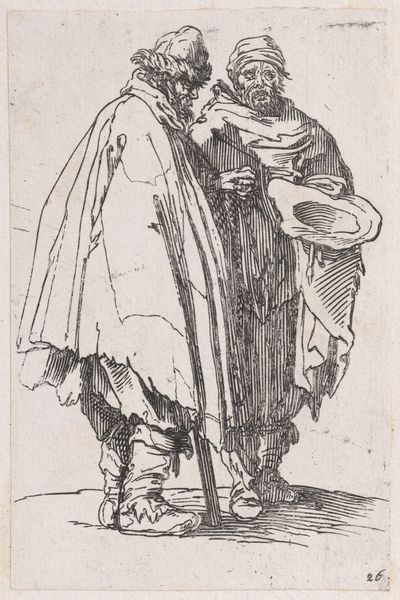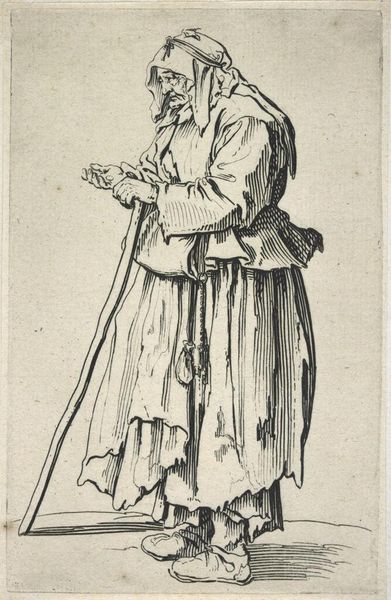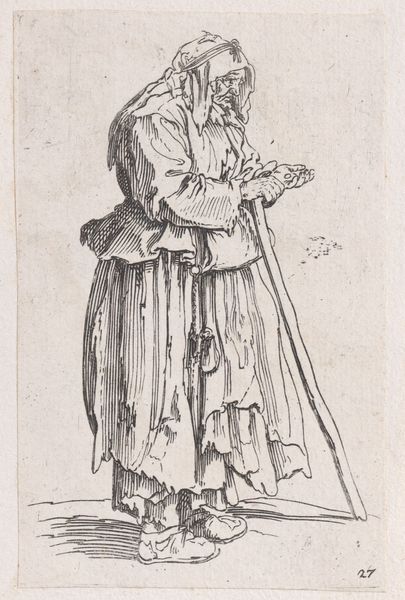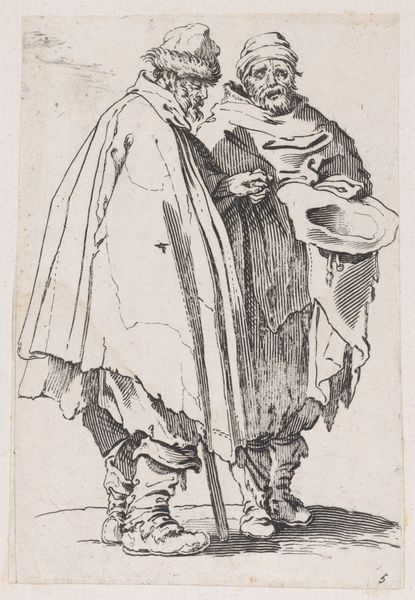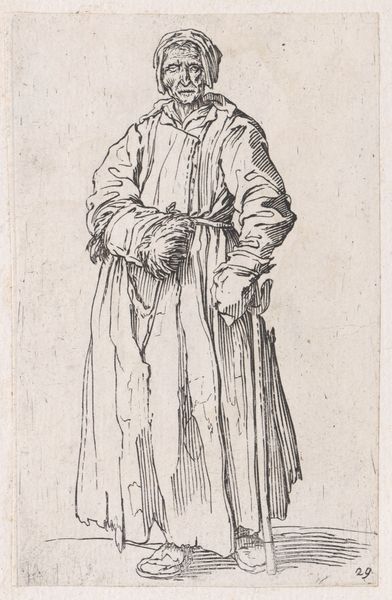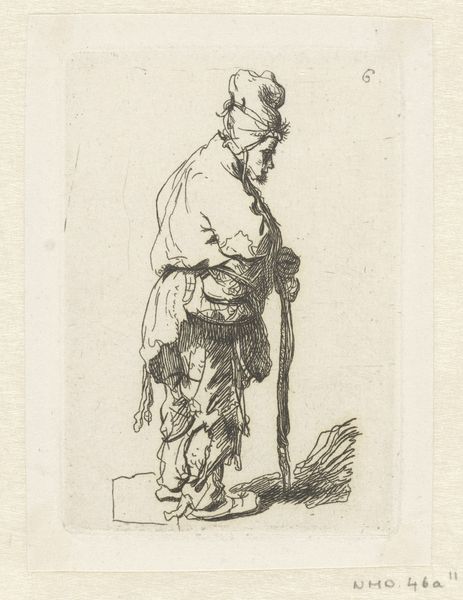
Reverse Copy of La Mendainte aux Béquilles (The Female Beggar with Crutches), from Les Gueux suite appelée aussi Les Mendiants, Les Baroni, ou Les Barons (The Beggars, also called the Barons) 1625 - 1700
0:00
0:00
drawing, print, etching
#
portrait
#
drawing
#
baroque
# print
#
etching
#
figuration
#
genre-painting
Dimensions: Sheet: 5 3/8 x 3 7/16 in. (13.7 x 8.8 cm) trimmed and backed
Copyright: Public Domain
This image is a reverse copy of an etching, part of a series called "The Beggars." The figure, a woman using crutches, is rendered with stark lines that emphasize her destitution. But let's consider the crutch itself— a symbol extending far beyond mere physical support. Across cultures, the staff or crutch often represents authority, guidance, and even divine power. Think of the scepters of kings, or the staffs carried by religious figures. Yet here, the crutch speaks of infirmity, dependence, and the stark realities of poverty. This is not a linear degradation, but a complex interplay. The crutch of the beggar echoes the staff of the shepherd, both guiding and leaning on their charge. We might see in this image a reflection of societal anxieties, where the symbols of power and care are inverted, confronting us with the vulnerability inherent in the human condition. The image engages viewers on a deep, subconscious level, and it evokes feelings of empathy. The visual language of suffering is a powerful force, its cyclical progression reminding us of the enduring human struggles that resurface throughout history.
Comments
No comments
Be the first to comment and join the conversation on the ultimate creative platform.

